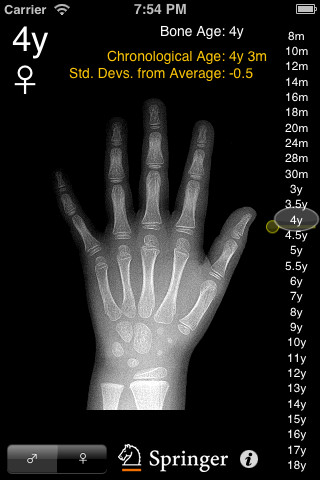

Body mass index (BMI) was calculated as weight (kg)/height squared (m 2), while the BMI z-score was obtained according to a World Health Organization (WHO) growth reference for school-aged children and adolescents.
Bone age and chronological age portable#
Weight and height were measured to the nearest 0.1 using a Tanita MC-780A scale (Tanita Corporation, Tokyo, Japan) and a portable fixed stadiometer (model TZG, China), respectively. Children were asked to wear light clothing and no shoes, and all measurements were collected by trained technicians using a standard protocol, as described elsewhere. Anthropometric measurements included body weight and height. Household income was divided into six levels (15,000 Chinese yuan (CNY)/month) and unknown. Sociodemographic characteristics included age, sex, height, weight and household income. The parents were interviewed to assess the demographic, socioeconomic and lifestyle characteristics of the participants. For this reason, the aims of this study were to: (1) explore the extant dietary patterns among school-age children, and (2) examine the association between such dietary patterns and bone measurements in school-age children in China. Little is known about the effects of dietary patterns on bone health among children in China, who are thought to exhibit unique dietary structures. These discrepancies can be explained by cultural differences in diet or the use of different study methods to explore such dietary patterns. Although the importance of childhood dietary patterns for lifelong health is increasingly recognized, only a few studies have been carried out in the USA, Spain, South Korea and other countries to assess the association between dietary patterns and bone health in pediatric populations, and the results have been inconsistent. In conclusion, our study recommends home or school meals should be rich in fruit, milk, eggs with a moderate amount of vegetables, coarse grains and meat to promote bone development for school-age children.Ĭhildhood represents a critical window for establishing lifelong dietary patterns and healthy habits. Total body (TB) and total body less head (TBLH) BMC and BMD were measured using dual-energy X-ray absorptiometry. DPs were identified by principal component factor analysis. Children aged six–nine years ( n = 465) were enrolled in this cross-sectional study. We aimed to investigate the relationship between dietary patterns (DPs), bone mineral content (BMC) and bone mineral density (BMD) in school-age children in China. To support our findings further a well-designed, controlled as well as longitudinal studies with a larger sample size is required.īone age demirjian′s method dental age.Early bone accrual significantly influences adult bone health and osteoporosis incidence. It is important to consider dental age and bone age as variables for diagnosing underweight children. The data supports the concept that dental age and bone age delay is a significant feature in underweight children. The correlation between chronological age, dental age and bone age were all positive in males. Bone age assessment was carried out using hand wrist radiograph following Bjork, Grave and Brown's method.ĭental age and Bone age was delayed compared to chronological age in both sexes. Dental age assessment was done using orthopantamogram following the method described by Demirjian. Chronological age was assessed by recording date of birth. Therefore, objective of this study was to determine and compare dental age, bone age and chronological age in underweight children.ġ00 underweight children between the age group of 18-14 years were selected. There are few studies, which showed the relationship between dental age, bone age and chronological age in underweight children. It is essential for a pediatric dentist to formulate treatment plan and it is a source of complementary information for pediatrician. The knowledge of bone age and dental age is of great importance for pediatrician and pediatric dentist.


 0 kommentar(er)
0 kommentar(er)
